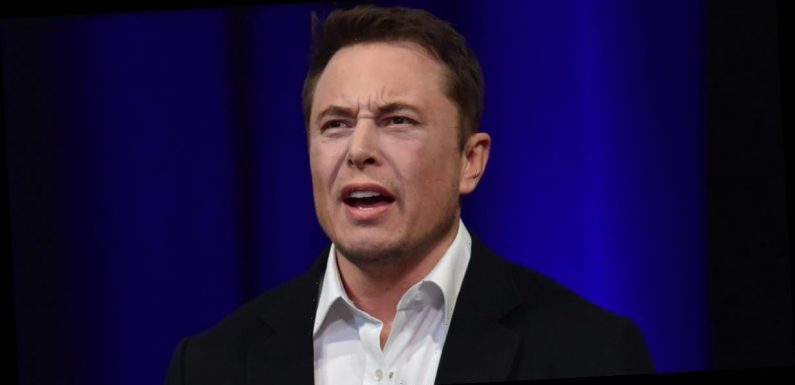
- SpaceX was ready to attempt a Starship rocket test flight on Thursday, but it couldn’t get clearance from the FAA.
- Elon Musk criticized the agency on Twitter, saying that with its rules “humanity will never get to Mars.”
- However, the FAA told Insider it was working with SpaceX to “resolve outstanding safety issues.”
- Visit Business Insider’s homepage for more stories.
SpaceX was ready to launch its latest prototype of its Starship rocket about six miles into the air on Thursday.
That is, until the Federal Aviation Administration stepped in.
The rocket sat on the launchpad at the company’s facilities in Boca Chica, Texas, ready for workers to remotely load propellant into its fuel tanks. Local roads were also closed to make way for any explosions, and the company even posted an announcement about the flight on its website. All that SpaceX needed was approval from the FAA.
But the FAA pulled its airspace closure — a requirement for launch — triggering a public complaint by SpaceX CEO Elon Musk against the regulatory agency.
Around 10:50 a.m. CST, the FAA canceled the closure that was meant to make room for the rocket’s launch over the southeastern tip of Texas. About an hour later, the agency issued an advisory that the flight attempt was officially scrubbed.
Musk was none too pleased.
“Unlike its aircraft division, which is fine, the FAA space division has a fundamentally broken regulatory structure,” he said on Twitter Thursday afternoon. “Their rules are meant for a handful of expendable launches per year from a few government facilities. Under those rules, humanity will never get to Mars.” (The agency recently streamlined its rocket-launch rules, though that policy shift is not set to take effect until later this year.)
Despite the FAA’s sudden withdrawal of approval, SpaceX nevertheless began loading the Starship prototype with liquid propellant, as if preparing for launch or a “wet” dress rehearsal. Meanwhile, Musk was “working the phones” trying to get the FAA to approve a launch, according to Ars Technica senior space editor Eric Berger. The agency ultimately did not budge.
“We will continue working with SpaceX to resolve outstanding safety issues before we approve the next test flight,” an FAA spokesperson said in a statement emailed to Insider.
It’s unclear what those safety issues were, but Washington Post space reporter Christian Davenport said that the FAA had confirmed the issues were related to the Starship vehicle. Irene Klotz, the space editor for Aviation Week & Space Technology, hinted that a procedural lapse on SpaceX’s part was possibly to blame.
“From what I’ve been told, required data for FAA safety assessment of @SpaceX 10km SN9 flight from Boca Chica was not fully submitted by compliance personnel,” Klotz tweeted Thursday afternoon.
Once the rocket was filled with propellant, there was still no sign of federal approval. So SpaceX began to unload the fuel. Residents of Boca Chica Village then received a notice that it was safe to return to their homes, according to Mary McConaughey, a longtime homeowner who reports for NASASpaceflight.com — confirming SpaceX would not make the day’s launch attempt.
The road to Mars is paved with regulations
The prototype that Musk wanted to launch on Thursday is called Starship serial No. 9, or SN9. Once it gets FAA approval, it’s set to rocket about six miles (10 kilometers) into the air. The first and only time SpaceX attempted such an ambitious Starship flight, in December, the rocket exploded as it landed back on Earth. SN9 will attempt to repeat that test and return in one piece.
The tricky maneuver involves shutting off the rocket’s three Raptor engines as it reaches the peak of flight, then using its four wing flaps to control a belly-flop free-fall back to Earth, reigniting the engines just in time to turn Starship upright and slow its fall, so that it touches down on a landing pad.
Nailing the non-explosive landing is important. Musk wants the final Starship-Super Heavy launch system to be fully reusable. If that plan succeeds, it may slash the cost of reaching space 1,000-fold, power round-the-world hypersonic travel on Earth, and fly astronauts to the moon.
Musk has said that his ultimate plan is to build 1,000 Starships to carry enough people and cargo to Mars to build an independent, self-sustaining city there.
But he can’t do that without cooperating with regulators like the FAA.
“It’s clear that industry can and wants to do innovative things, ambitious things, impressive things, a lot faster than have been done in the past,” George Nield, a former FAA associate administrator who led its Office of Commercial Space Transportation, told Insider after Musk tweeted about the FAA. “I’m hoping that the government and industry, with help from academia as appropriate, can all work together to figure out how to do that. I think everyone would benefit if that can be the case.”
It’s unknown when SN9 will launch, but the FAA has issued an airspace closure notice for Friday from 8 a.m. to 5 p.m. CT and the Cameron County Judge has issued road closures in Boca Chica for 8 a.m. to 2 p.m. Both are requirements for launch, in addition to the FAA approval.
Source: Read Full Article